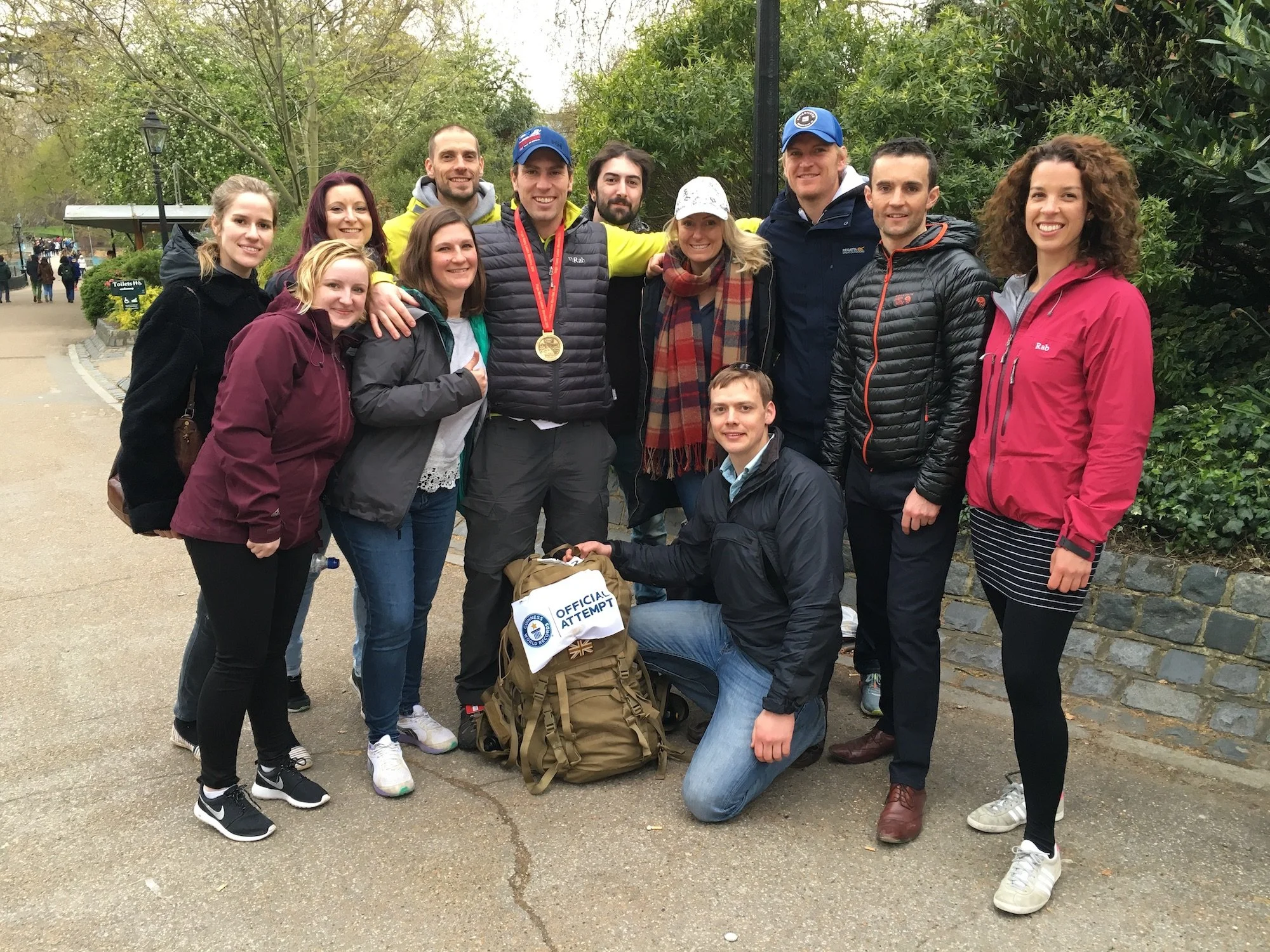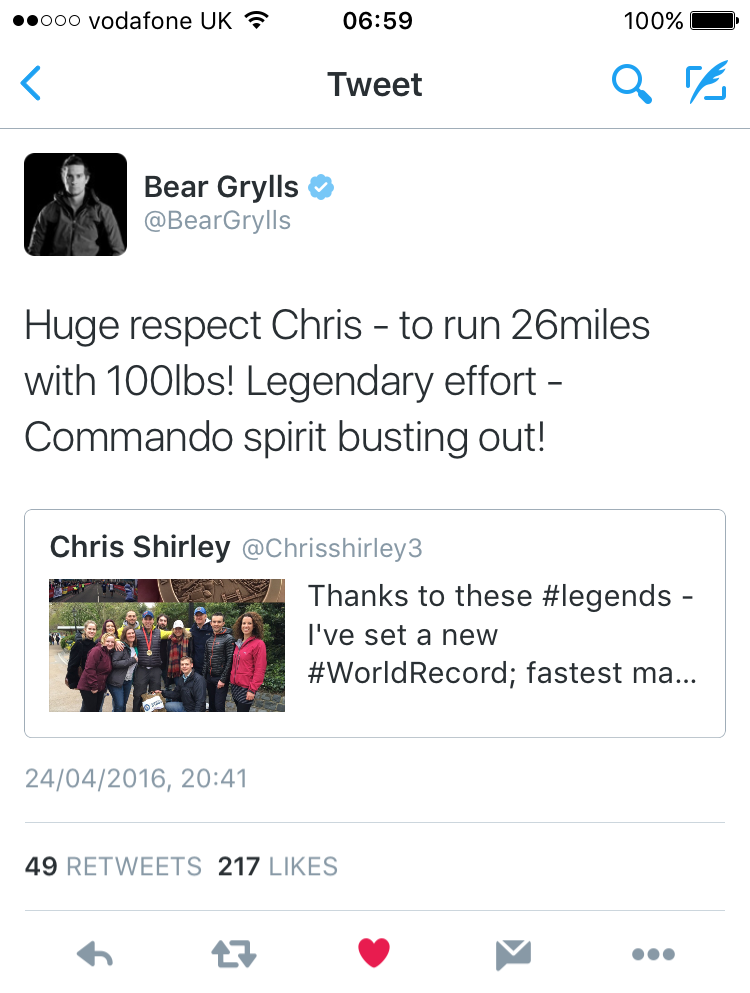How to plan for a world record attempt
In 2016, I set my first world record when I successfully completed the London marathon carrying a 100-lb backpack, something that had never been done on record before (I suspect people have completed it before so I don’t think of myself as being the first to have ever done it).
The process was something I get asked about by adventurers after hearing my Tales of Adventure podcast, and so I decided to document the process for others who also want to enter the Guinness book of records.
The planning process.
Planning for any world record attempt requires careful consideration of all the various factors, I don’t think many of them are as easy as just turning up and doing them!
Here are some steps to think about on your journey:
1. Identify the exact record:
Choose a record that is achievable and suitable for your skills, resources, and interests – there is no point trying to do something you don’t have a natural interest in, as getting others on board will be difficult enough as it is!
The 3 general categories for world records in the outdoors are ‘first’, ‘furthest’, or ‘fastest’.
i.e., ‘first person to cross Antarctica on a unicycle, ‘furthest distance cycled wearing a blind fold’, or ‘fastest marathon carrying a 100lb backpack’.
Research the current record holder (if there is one), their techniques, and the requirements for the record.
On new world records, you will need to apply to Guinness for them to check the record idea satisfies their checks on it public interests. Because it costs them money to work on the project, you’ll need to show that you’ve a reasonable likelihood of setting it, and that it won’t be beaten for some time. There were records for marathons completed with 20, 40, 60, and 80lb backpacks, however no record for completing with a 100lb backpack, so I believe I had a reasonable chance of acceptance with my application.
With the 100-lb backpack
2. Set the goal.
Determine what you hope to accomplish with your attempt. Decide on a specific goal, such as beating the current record by a certain margin or setting a new record in a related category (checking that there is interest in it from Guinness, of course)
3. Determine the rules for the attempt.
It’s incredibly important to learn the mandatory rules and regulations of the record you are attempting, as clearly you don’t want to finish it and find out that you didn’t qualify. Understand the criteria for success and failure and make sure you can meet them.
Guinness will confirm what you must do to meet their prerequisites if your application is successful.
4. Assemble a team of supporters to spread the word and get past the hurdles.
Gather a team of people who can assist you in the planning, funding, and execution of your attempt – as world record are often expensive and complicated.
It’s good practice to have a working relationship with coaches, trainers, sponsors, and other professionals with relevant expertise to help fund the project and surface any unforeseen issues that you may not be able to pre-empt. (photo of world record finish)
The incredible team that got me through the endeavour! Without their encouragement, support, and focus, I don’t think I would’ve been successful.
5. Develop your plan, but don’t be afraid to change it as you go.
It goes without saying, create a detailed plan that outlines the steps you need to take to prepare for the attempt so that you can track its progress. I found it useful to keep a journal documenting training, equipment, logistics, and any other necessary factors, so that I could keep ahead of it whilst working a full-time job at the BBC in central London.
Set deadlines for each step to ensure you stay on track, this will help you see any future problems before they form.
6. Remember to train for it.
It may sound silly, but don’t forget to train, both physically and mentally for the attempt. Follow a training program that is tailored to the specific requirements of the record but don’t be afraid to change it if you find better ways of preparing.
7. Rehearse and test.
It’s vitally important to conduct practice runs or test attempts to identify any weaknesses or areas for improvement in your plan. Use these tests to refine your technique and adjust your plan as needed. I did this several times when training with the weight as lifting it needed a specific technique to ensure I didn’t injure myself.
8. Do it!
On the day of the attempt, follow your plan and execute to the best of your ability. Remain focused, confident, and determined throughout the process.
9. Be sure to document it.
Be sure to keep accurate records of the attempt, including video footage, witness statements, and any other relevant information (such as GPS tracks, etc). This will be necessary for verification and submission to the Guinness if you’re doing it outside of an official event. Because my progress was tracked as part of the London Marathon, I only had to take the backpack to an official with a set of weighing scales near the event start line.
10. Submit your evidence for verification.
Submit your documentation to Guinness for verification. If your attempt is successful, you will be recognised as a new world record holder and eligible for the official certificate!
11. Celebrate and thank your supporters!
Your friends and family will have given their time, effort, funds, and energy, to give you the best chance of success so be sure to properly thank them – they’ll appreciate it and be open to your next idea or attempt if you have one!
Gaining attention for your sponsors and charities is a key outcome to make the whole project worthwhile!







So it just happened. The idea. It kept on coming back to me, over and over again. Like I could just reach out and touch it. If he could carry an 80-lb. pack for 26.2 miles – then maybe I could do it with a 100-lb. (45.36kg) pack. I was surprised no-one had ever done it – I've had one or two podium places in low level Taekwondo competitions, but nothing quite on this scale. Nothing that would put me the best at something in the entire world!
It's daunting when you say it out loud: The; Entire; World.